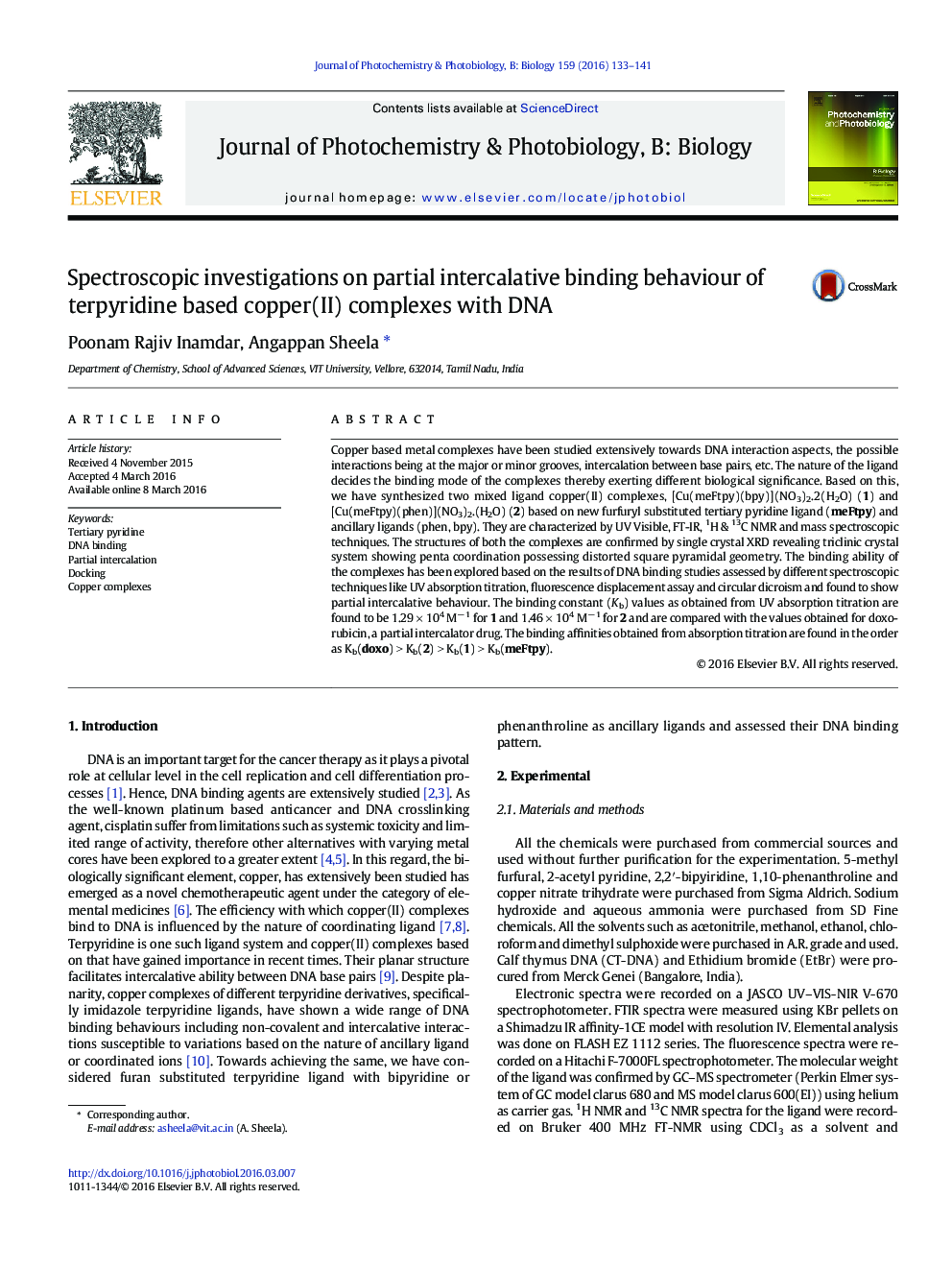| Article ID | Journal | Published Year | Pages | File Type |
|---|---|---|---|---|
| 29483 | Journal of Photochemistry and Photobiology B: Biology | 2016 | 9 Pages |
•Novel tertiary pyridine ligand (meFtpy) was synthesized and characterized.•Single crystals of corresponding mixed ligand copper (II) complexes were obtained.•DNA binding ability of the complexes was compared with doxorubicin.•Partial intercalative binding mode of the complexes with DNA was assessed.
Copper based metal complexes have been studied extensively towards DNA interaction aspects, the possible interactions being at the major or minor grooves, intercalation between base pairs, etc. The nature of the ligand decides the binding mode of the complexes thereby exerting different biological significance. Based on this, we have synthesized two mixed ligand copper(II) complexes, [Cu(meFtpy)(bpy)](NO3)2.2(H2O) (1) and [Cu(meFtpy)(phen)](NO3)2.(H2O) (2) based on new furfuryl substituted tertiary pyridine ligand (meFtpy) and ancillary ligands (phen, bpy). They are characterized by UV Visible, FT-IR, 1H & 13C NMR and mass spectroscopic techniques. The structures of both the complexes are confirmed by single crystal XRD revealing triclinic crystal system showing penta coordination possessing distorted square pyramidal geometry. The binding ability of the complexes has been explored based on the results of DNA binding studies assessed by different spectroscopic techniques like UV absorption titration, fluorescence displacement assay and circular dicroism and found to show partial intercalative behaviour. The binding constant (Kb) values as obtained from UV absorption titration are found to be 1.29 × 104 M− 1 for 1 and 1.46 × 104 M− 1 for 2 and are compared with the values obtained for doxorubicin, a partial intercalator drug. The binding affinities obtained from absorption titration are found in the order as Kb(doxo) > Kb(2) > Kb(1) > Kb(meFtpy).
Graphical abstractFigure optionsDownload full-size imageDownload as PowerPoint slide
